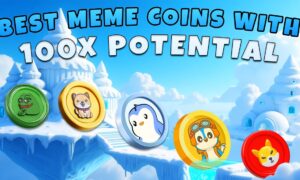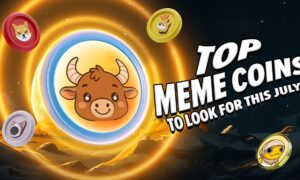Here’s a persistent question: How are Web3 applications decentralized when they rely on centralized providers that contradict the cypherpunk ethos that inspired blockchain? Most Web3 projects involve at least some Web2 infrastructure.
Web3 and decentralization promise to eliminate dependence on tech giants and dominant platforms while empowering stakeholder user communities. In reality, most decentralized apps (dApps) and DeFi services run frontend interfaces on Amazon Web Services or Cloudflare. An NFT is typically little more than a hash on a blockchain tied to data hosted on the centralized cloud. Many nodes behind Ethereum and other chains are operated by cloud providers like AWS, Google Cloud, and Microsoft Azure.
This is largely because of a lack of options that support the online experiences that users expect. Developers focus on transaction speed and user accessibility. Blockchains typically can’t respond to requests fast enough and scale efficiently enough for developers to build and deploy dApps that run fully on-chain.
“Almost all dApps use either Infura or Alchemy in order to interact with the blockchain,” Signal founder Moxie Marlinspike recently wrote. “In fact, even when you connect a wallet like MetaMask to a dApp, and the dApp interacts with the blockchain via your wallet, MetaMask is just making calls to Infura.”
But innovations are starting to deliver scalable Web3 platforms running fully on-chain, where services don’t rely on trusted intermediaries and users exercise control over their identity and data.
“From the blockchain side, there are great incentives to match the transaction speeds of Web2, and the development of a faster consensus across a large network,” says Shaw Walters, a developer at the immersive web agency Laguna Labs. “This is going to lead to a dramatic change in the medium term.”
Running On-Chain
DApps running completely on blockchain include the instant-message dApp OpenChat and the social content platform DSCVR, which resembles Reddit. Unlike most Web3 dApps, online users can interact with them without having a crypto wallet or tokens. Both projects run on the Internet Computer, a blockchain for web-based dApps where smart contracts respond to HTTP requests. Its sovereign network of independent nodes operates in data centers worldwide, none of which are centralized cloud providers.
“We’ve airdropped NFTs directly to DSCVR users without ever forcing them to sign up for a wallet,” says DSCVR co-founder Rick Porter. “By building DSCVR on-chain on the Internet Computer, we can seamlessly connect users to the colorful and interesting benefits of Web3 without the pain. The most mind-blowing part is that using DSCVR feels just like using a traditional Web2 site.”
“The emerging public view seems to be that the new web is a movement toward decentralization built around a new class of technologies, blockchain being at the heart of that,” adds Walters. “Nobody wants to be late, so everyone is paying attention, and they’ll get in in a big way once it seems profitable for them to do so.”
He is especially interested in the convergence of Web3 and the metaverse. Walters has been developing a full-stack MMO tool called XREngine, an open-source, end-to-end solution that developers can use to build games and create online experiences on blockchain.
The NFT Boom
The NFT boom is a sign of this movement, indicating that their role in Web3 projects won’t be limited to digital certificates for art and media and financial speculation. Facebook and Microsoft see the metaverse as a Web3 frontier where they can create a centralized consumer internet that is contrary to the early, open development of the World Wide Web. Because NFTs show promise for decentralizing digital ownership, thoughtfully integrating them into future platforms is essential to preventing tech giants from owning the metaverse.
This is why on-chain NFTs like Cronics from Tonic Labs, which are breedable and can be upgraded by incorporating other NFTs, and the recently launched BTC Flower project, whose NFTs adapt to external signals, are so exciting. By assembling different objects and integrating them into virtual spaces — composing them into environments, composing those environments into larger worlds, and composing those large worlds into the full metaverse — developers can create an open metaverse like the early web, where interoperability unlocks new innovations.
“Since XREngine deploys to the web and works on nearly all modern devices, it’s easy to integrate with existing websites and crypto wallets and such, and doesn’t require users to download anything,” notes Walters. “We’re building integrations to Unreal Engine and Unity3D so that our community can build worlds that can be served to users interacting from completely different clients, and even types of clients.”
Community Power
The role of user communities is also fundamentally different within the Web3 paradigm.
“DSCVR has become a launchpad for community-building and collaboration in the Web3 ecosystem. You can create a portal, set up governance rules, define roles, grow your community, whitelist users for airdrops, and then gate that community based on NFT ownership,” says Porter. “We’re seeing community builders convert from Discord because they can directly benefit from DSCVR’s native crypto ecosystem and share in its growth. But it’s not just the community builders that benefit. In traditional social media, platforms and creators extract revenue from their communities; on DSCVR, the platform and creators airdrop to valuable community members. The script is being flipped. Everyone gets a piece of the pie and shares in the growth.”
Community-centered transparency is already taking shape in game design, which is usually completed over years behind closed doors.
“We’re building with our garage door open,” says Tommy M., a pseudonymous developer working on the IC Gallery, an on-chain metaverse project. Though he has previous experience developing at Disney, where he designed video games for Marvel, Tommy is excited about how his current project involves community input right at the platform’s foundation. Investors and user communities have become interchangeable.
“It’s cool to build the game in the open, have the users playing it, giving you feedback, and then you iterate it to see what works and what doesn’t,” says Tommy. “You’d never do this in traditional game development. Having a user play a game that’s not yet finished is unheard of in traditional game development. In crypto, it’s fun to create a community around this that has a say in how a game gets developed.”
Though IC Gallery began as a place to exhibit 3D digital art in the metaverse, Tommy and his team are listening closely to users as they continue building out the technology.
“Exhibiting NFTs in the IC ecosystem was the first thing that we built, but it’s going to be a lot more than that,” Tommy says. “We’ll just keep exploring, implementing, and seeing what kind of market fit we have. We can be a metaverse, we can be many different things. The biggest thing is that we want to be interoperable. Whatever we build, we want to integrate as many different NFTs as possible. We want our game to build value for everyone.”
Cross-Platform
Interoperability is a common thread winding through discussions of Web3. Walters mentions asset extractability as a future XREngine design feature: the ability to take a digital asset out of one environment and integrate it into another.
“The more worlds that your assets work in, the more incentive there is for creators to focus their effort on the ecosystems where there is wide support,” he explains. “An open metaverse is kind of a free-for-all for creators, and we’re starting to see for the first time the creation of game pieces for games that don’t yet exist, or the integration of collectibles into games as game pieces to attract attention and users.”
Despite confusion about the current state of Web3 and its future, such ideas reflect why the Web3 idea attracts independently-minded developers and entrepreneurs. With so much potential on the horizon, it will be fascinating to see how blockchain-based Web3 and metaverse projects continue to evolve.



































